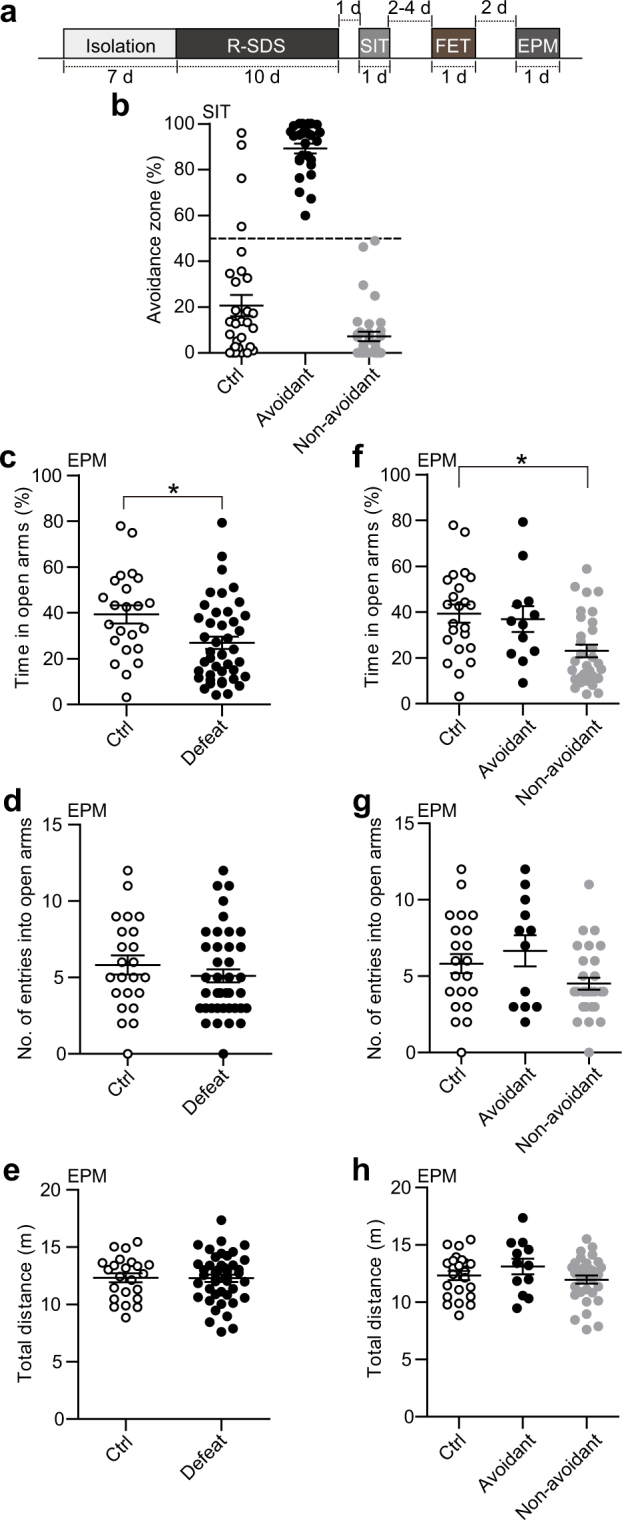Figure 2.

Repeated social defeat stress increased anxiety in the subpopulation of mice that didn’t show social avoidance. (a) A behavioral schedule. Following social isolation for a week, mice were subjected to R-SDS and cage transfers as control for 10 min daily for 10 consecutive days and received the social interaction test (SIT) for one day. Then the mice received the female encounter test (FET) followed by the elevated plus maze test (EPM). (b) Proportions of the time spent in the avoidance zone in the SIT for the control mice (“Ctrl”), Avoidant mice and Non-avoidant mice. We categorized the defeated mice that spent more than 50% of the total time in the avoidance zone as the Avoidant mice and the others as the Non-avoidant mice. (c–h) Proportions of the time spent in the open arms (c,f), numbers of entries to the open arms (d,g) and total distances moved (e,h) in the EPM for the control mice (“Ctrl”) and the defeated mice (“Defeat”) (c–e) or for the control mice (“Ctrl”), Avoidant mice and Non-avoidant mice (f–h). Values are expressed as means ± SEM. *P < 0.05 for unpaired t test (c) and one-way analysis of variance followed by multiple comparison tests with Tukey-Kramer correction (f).
